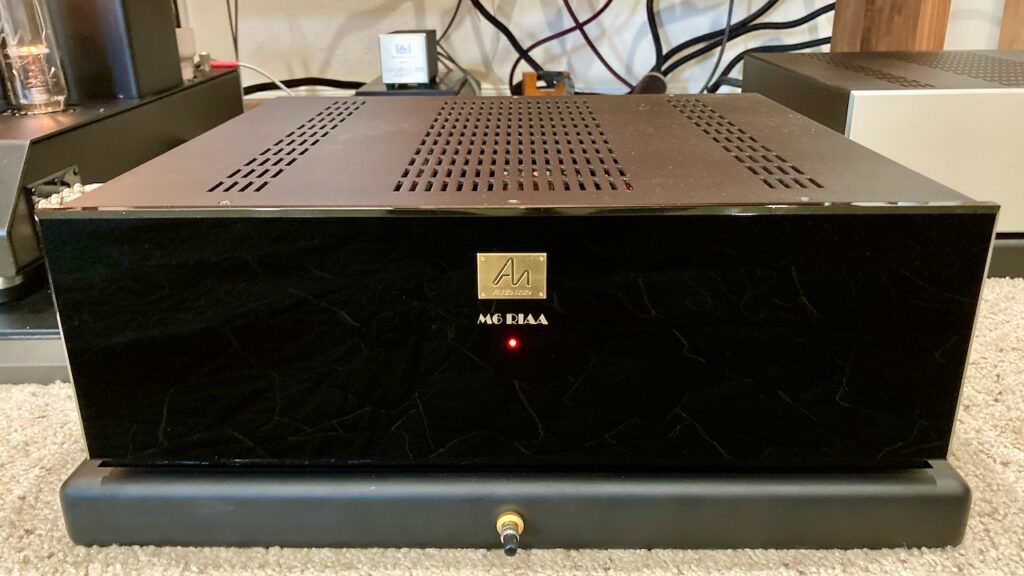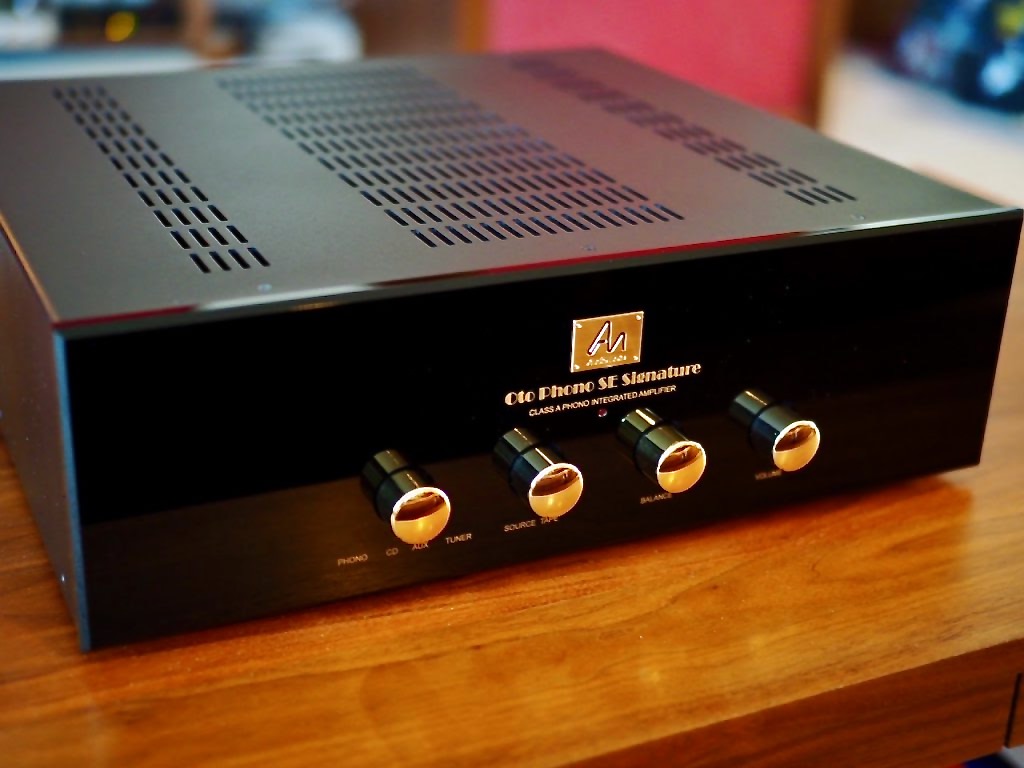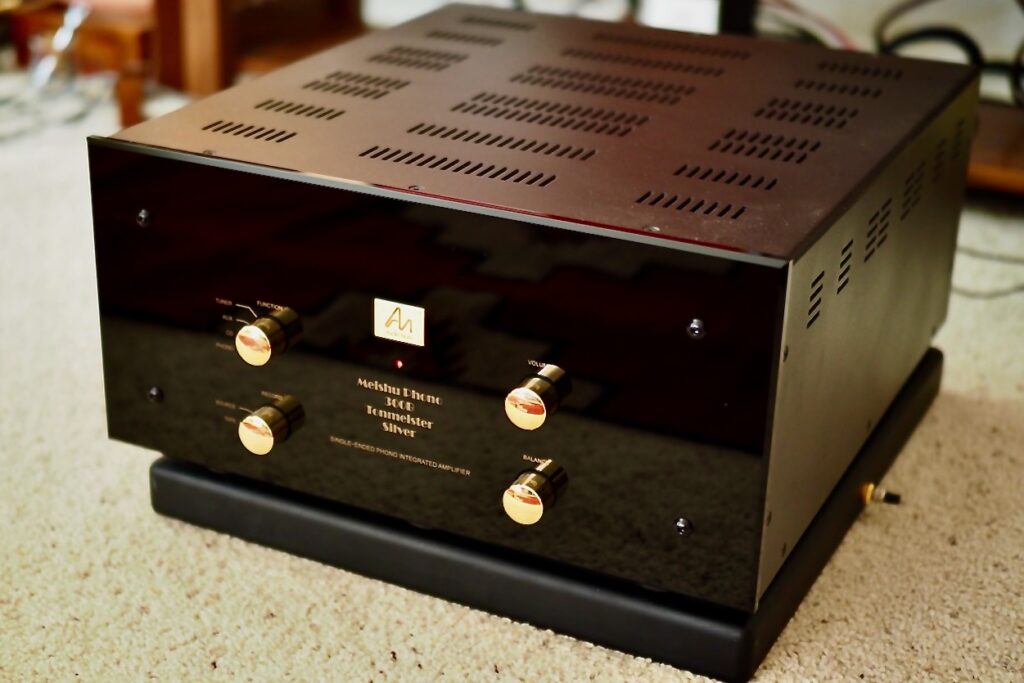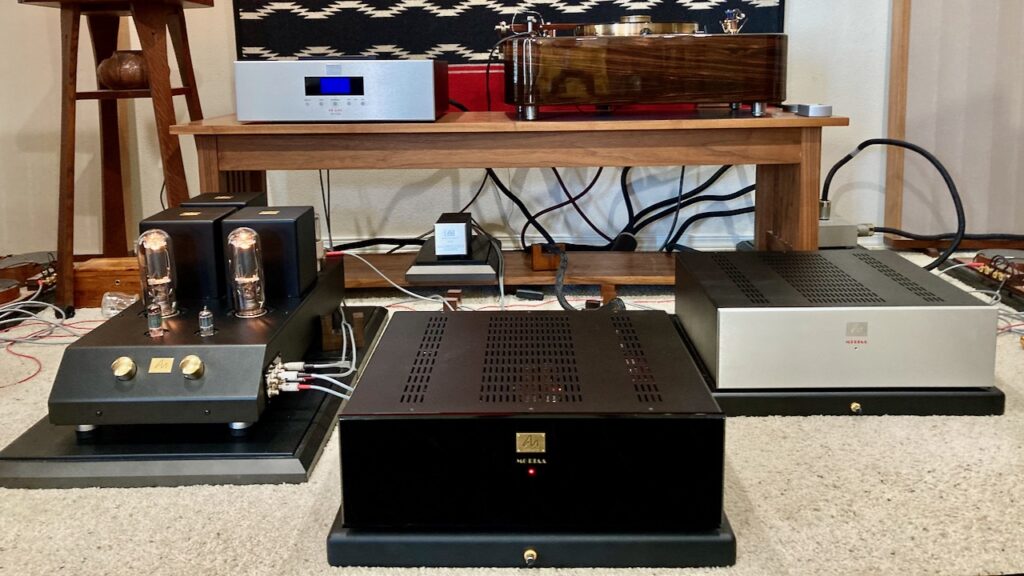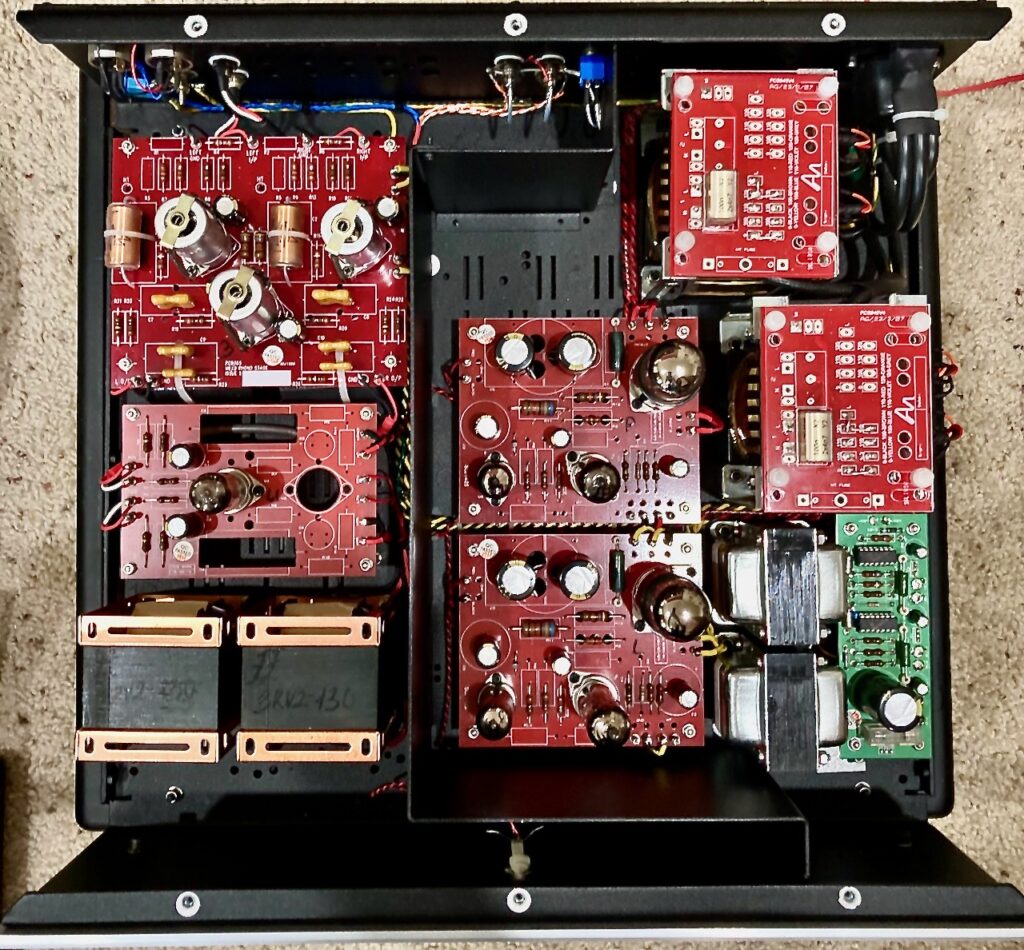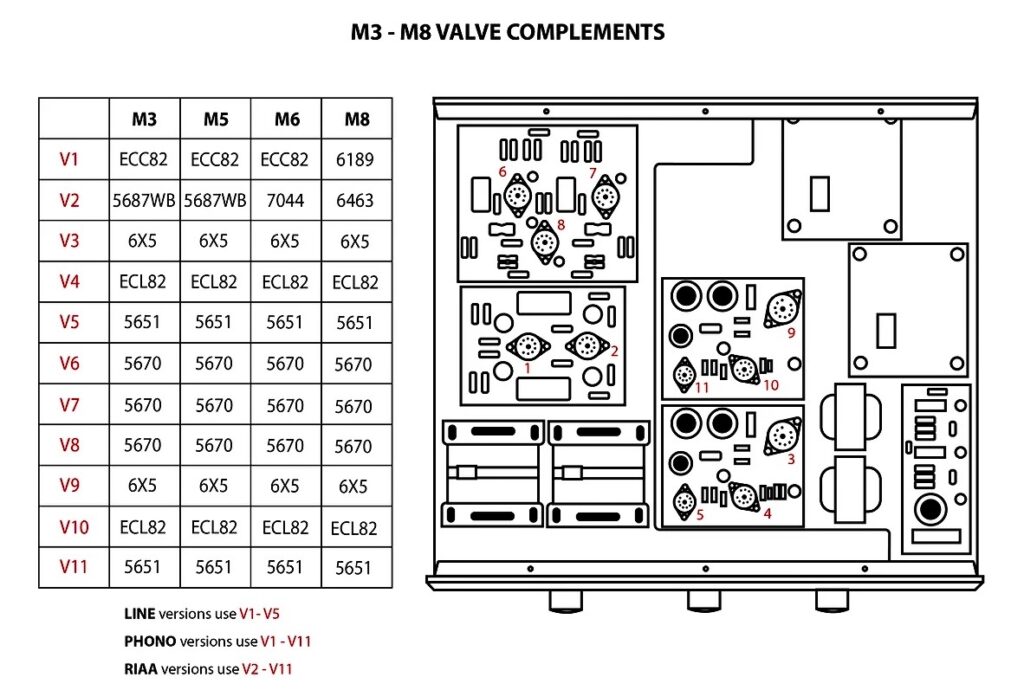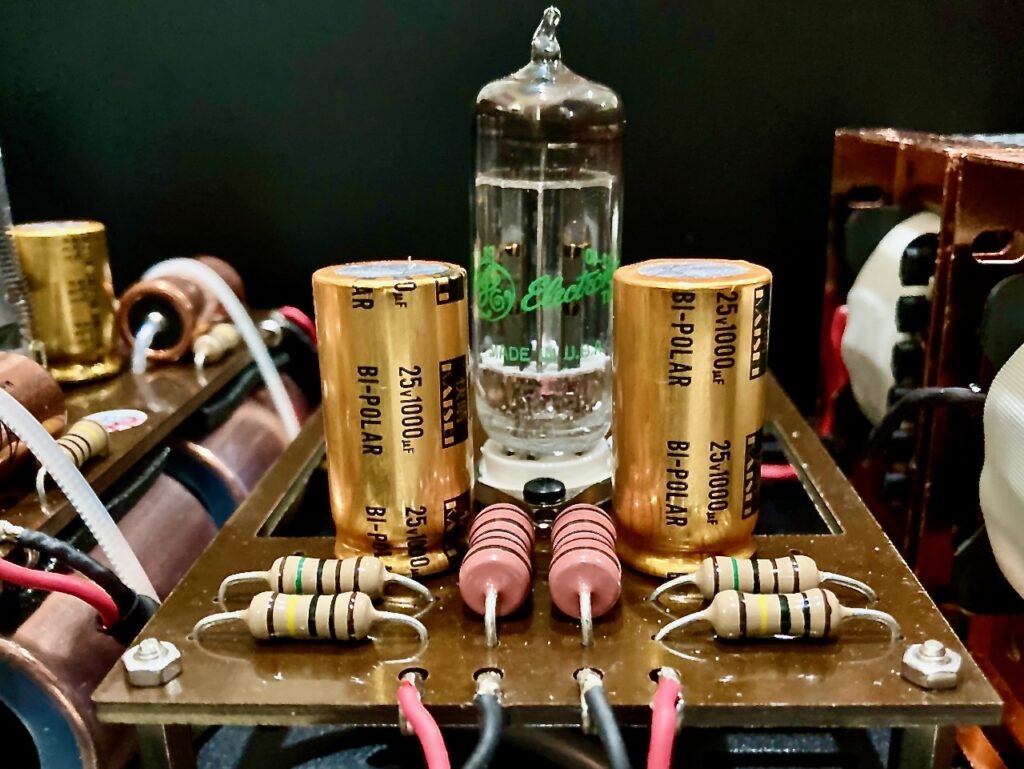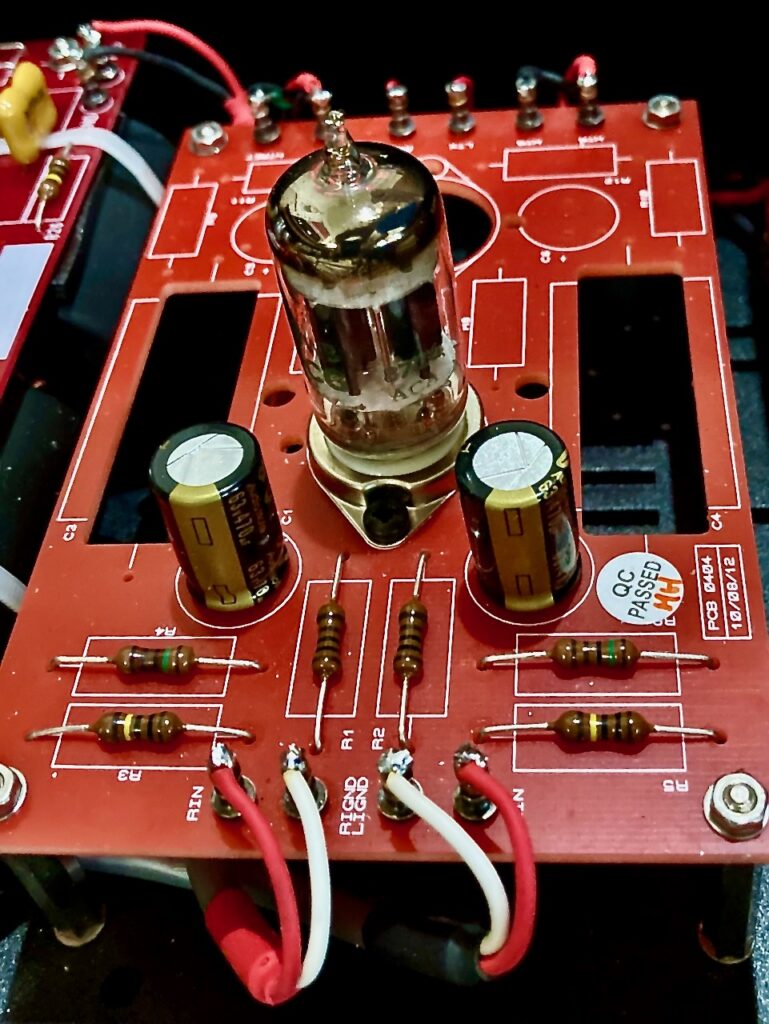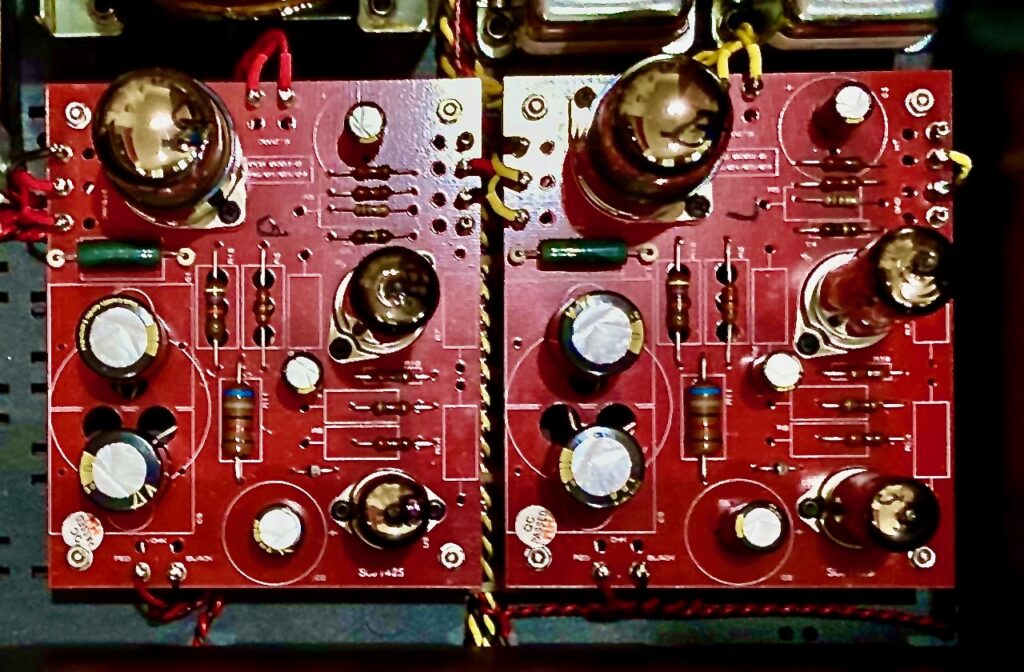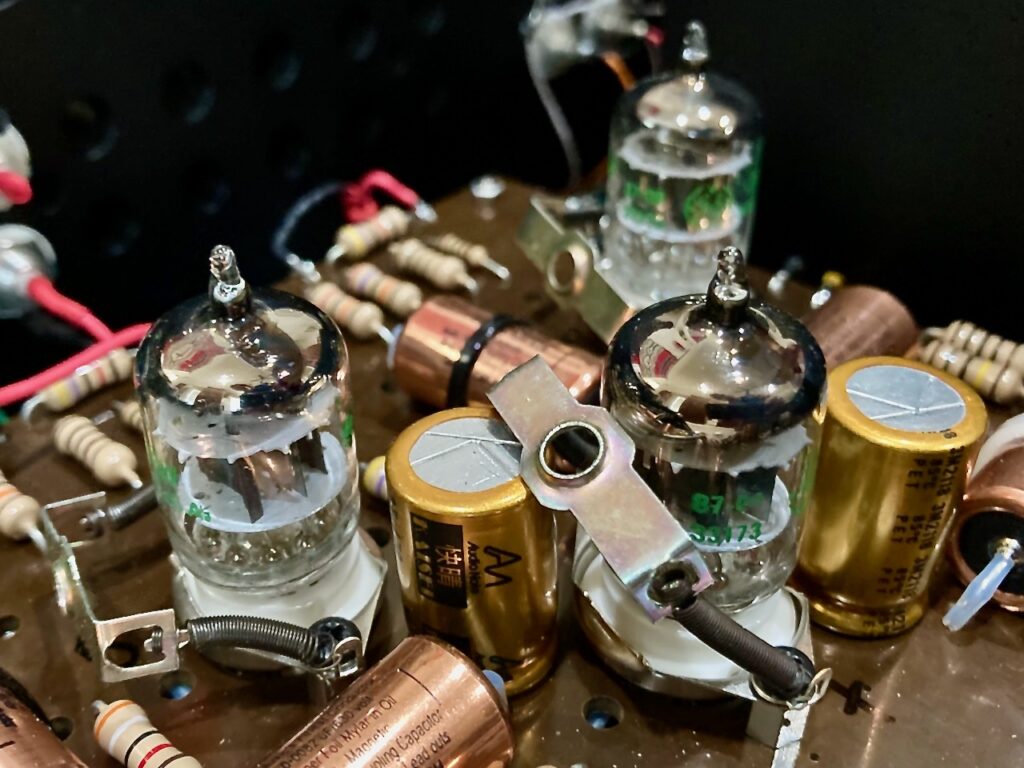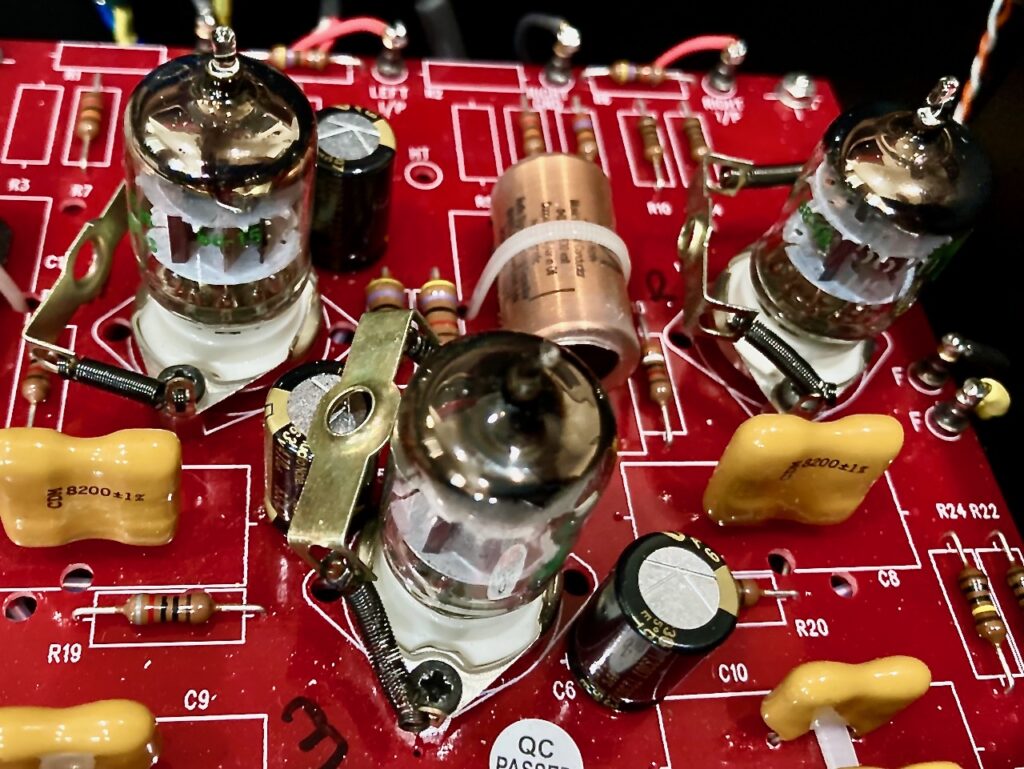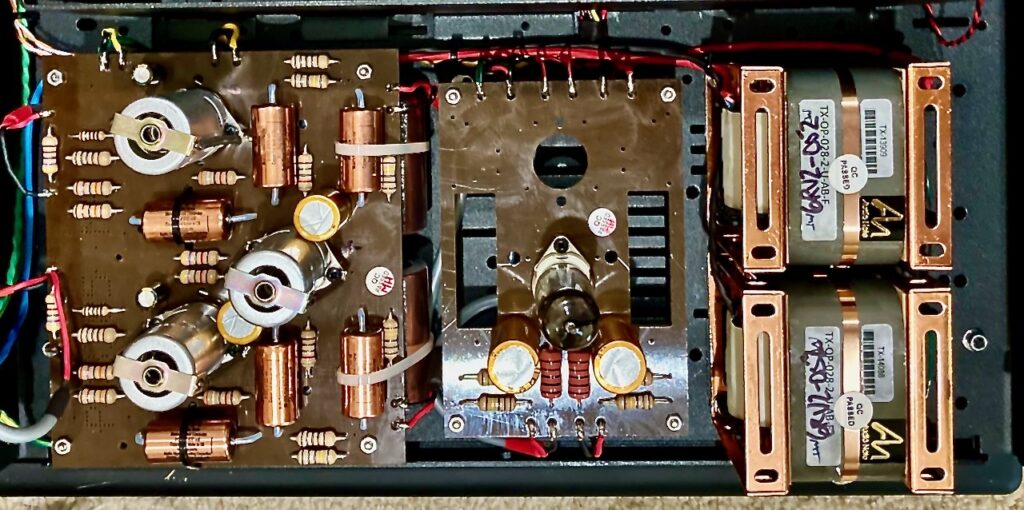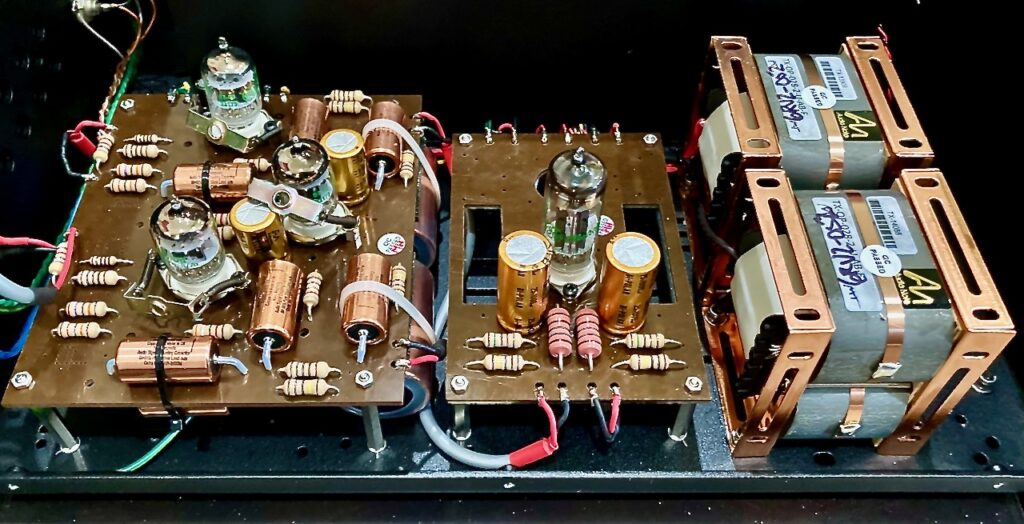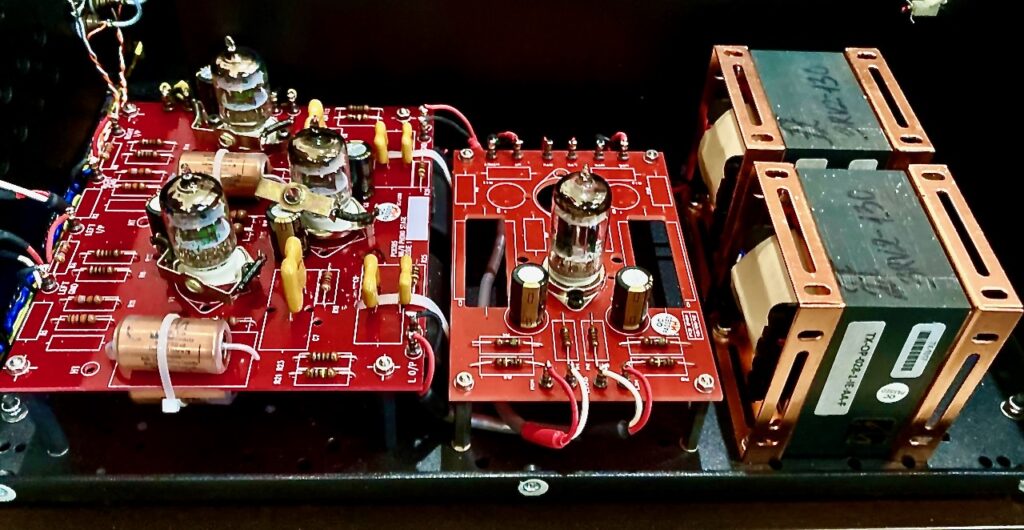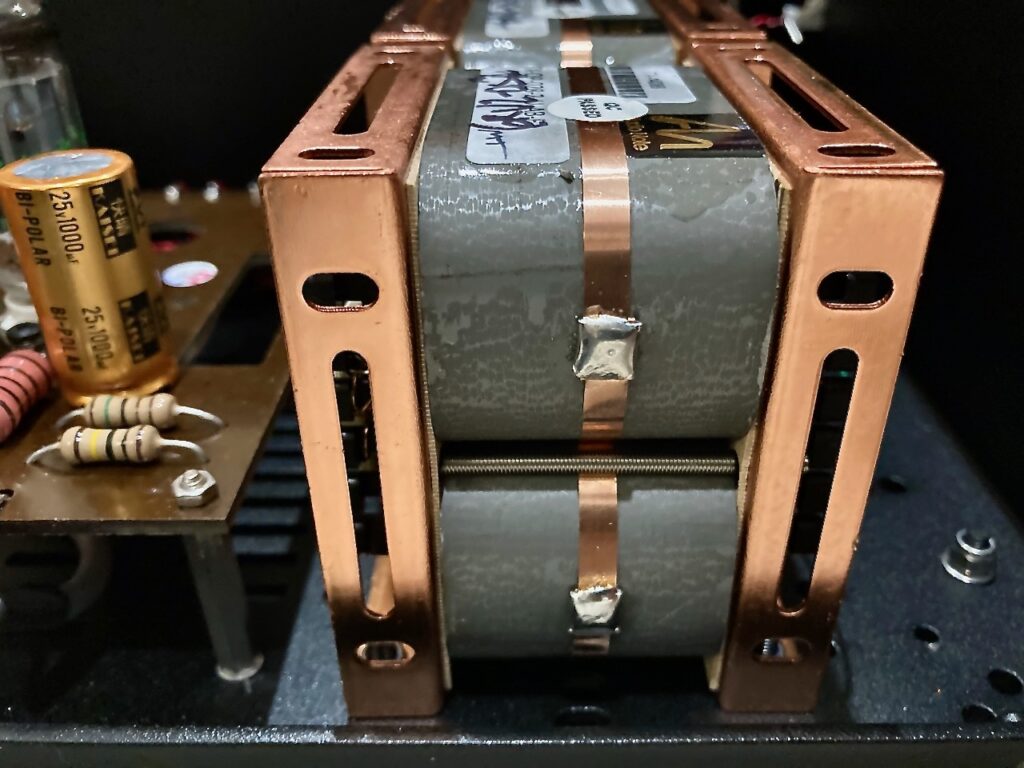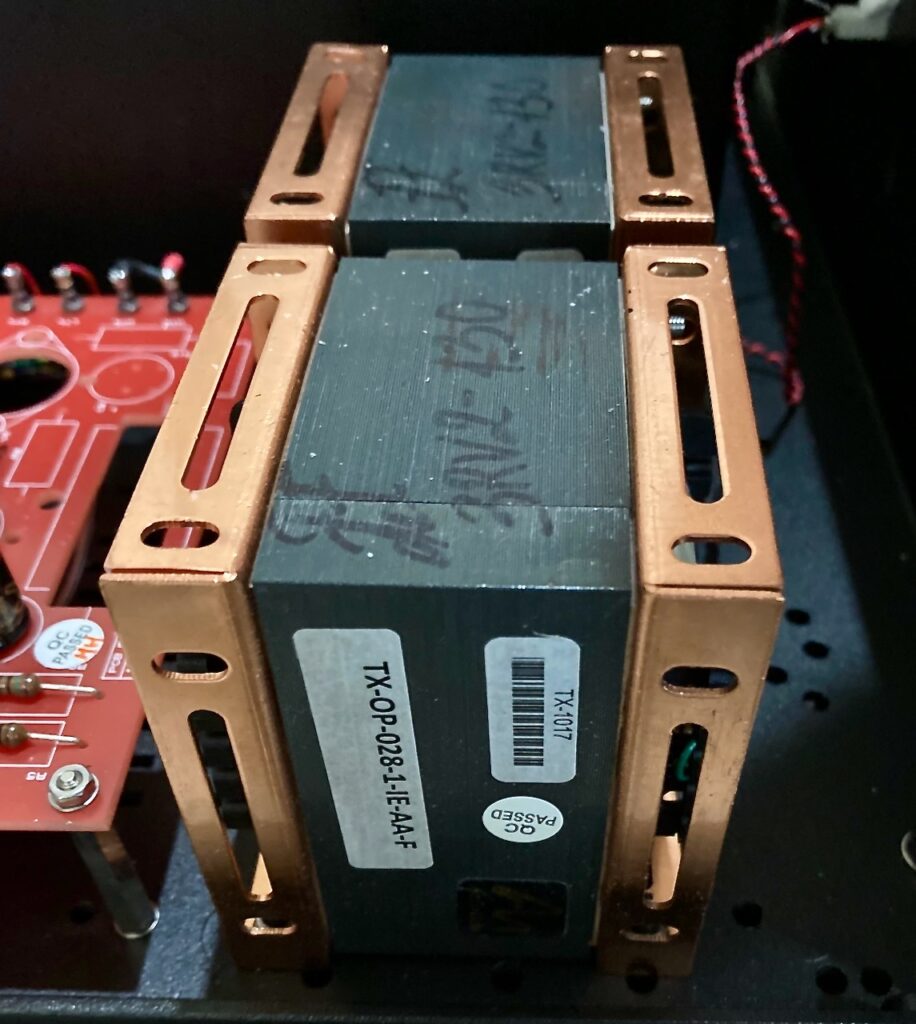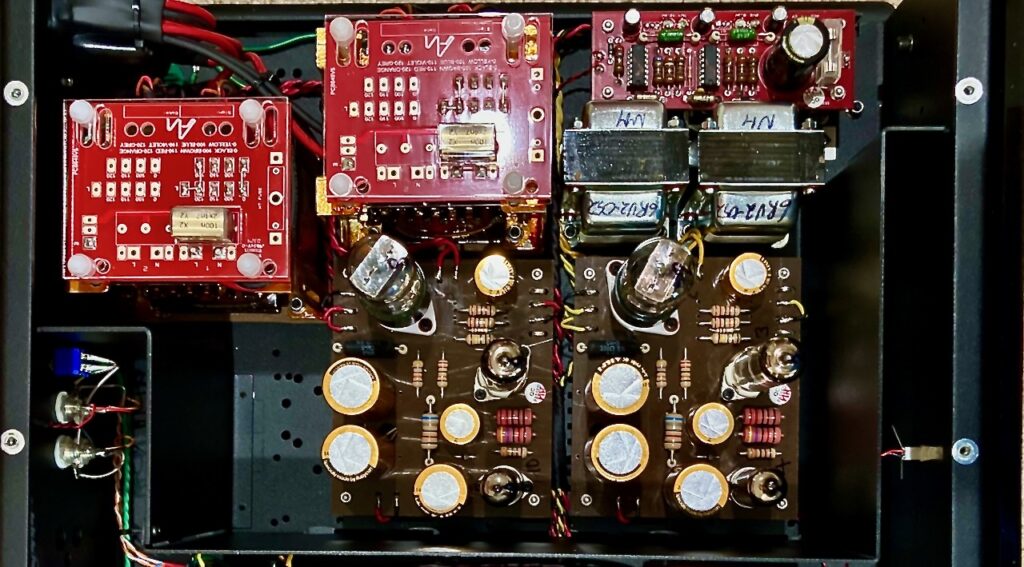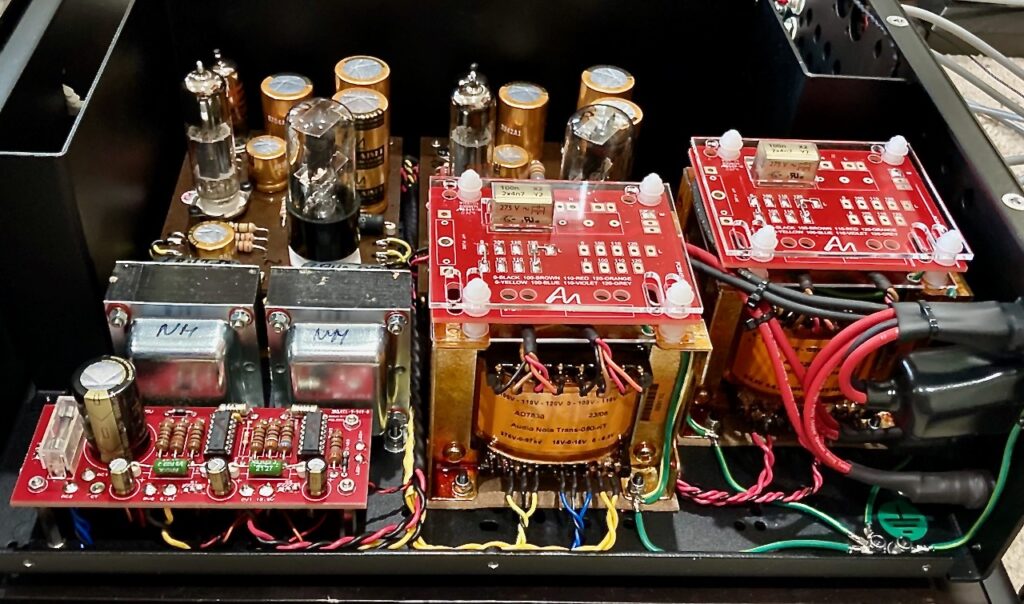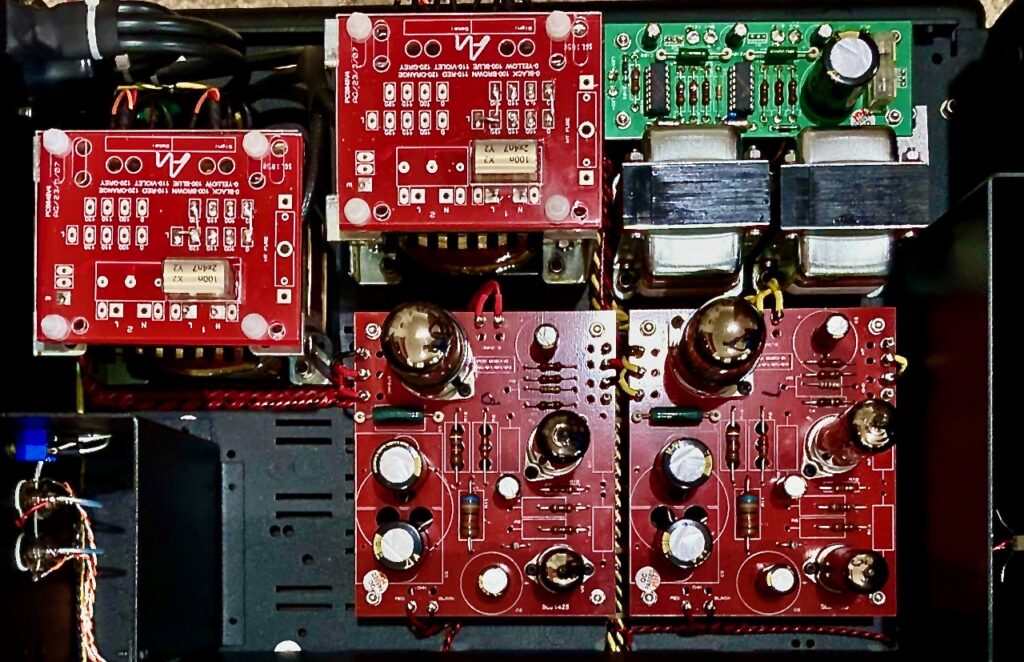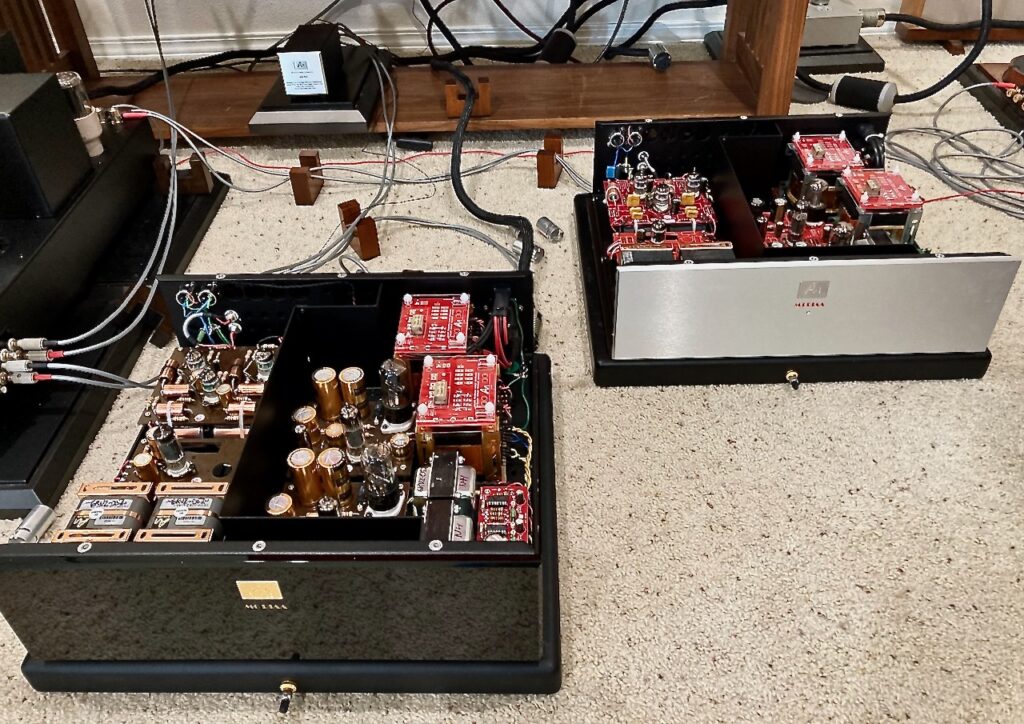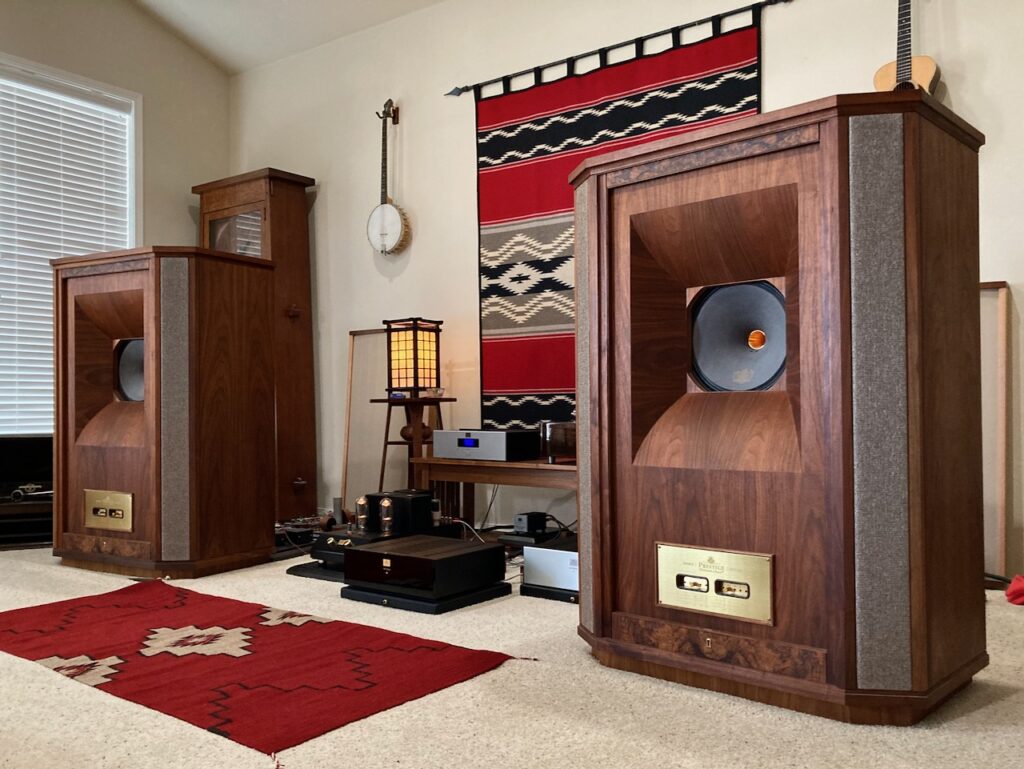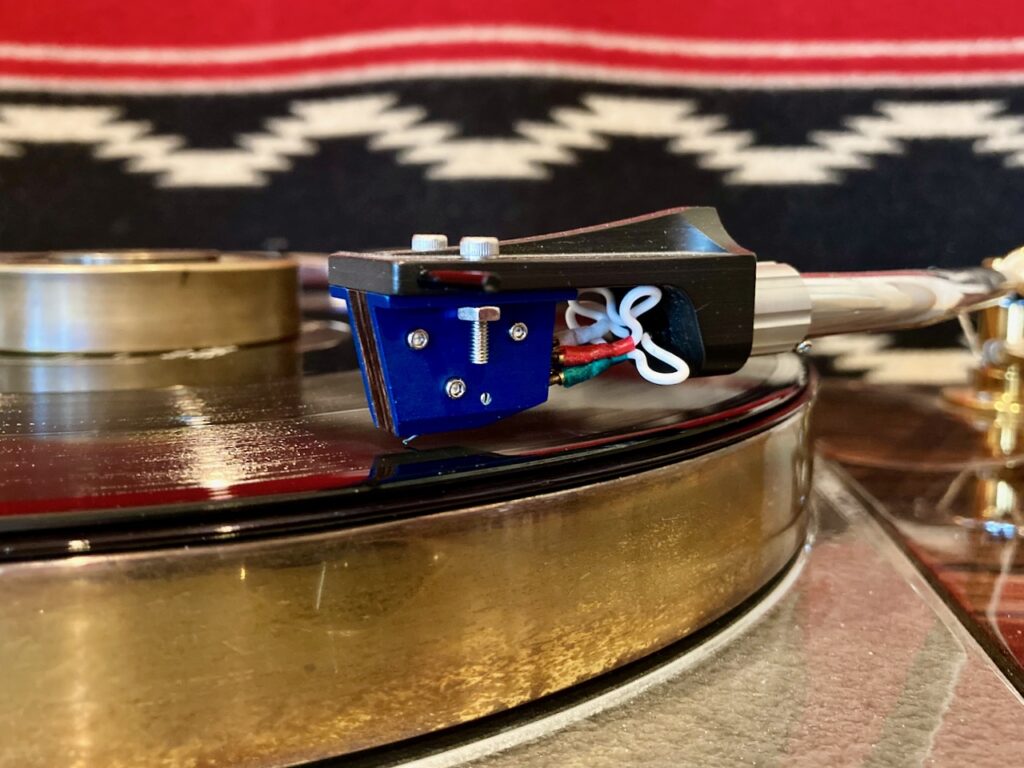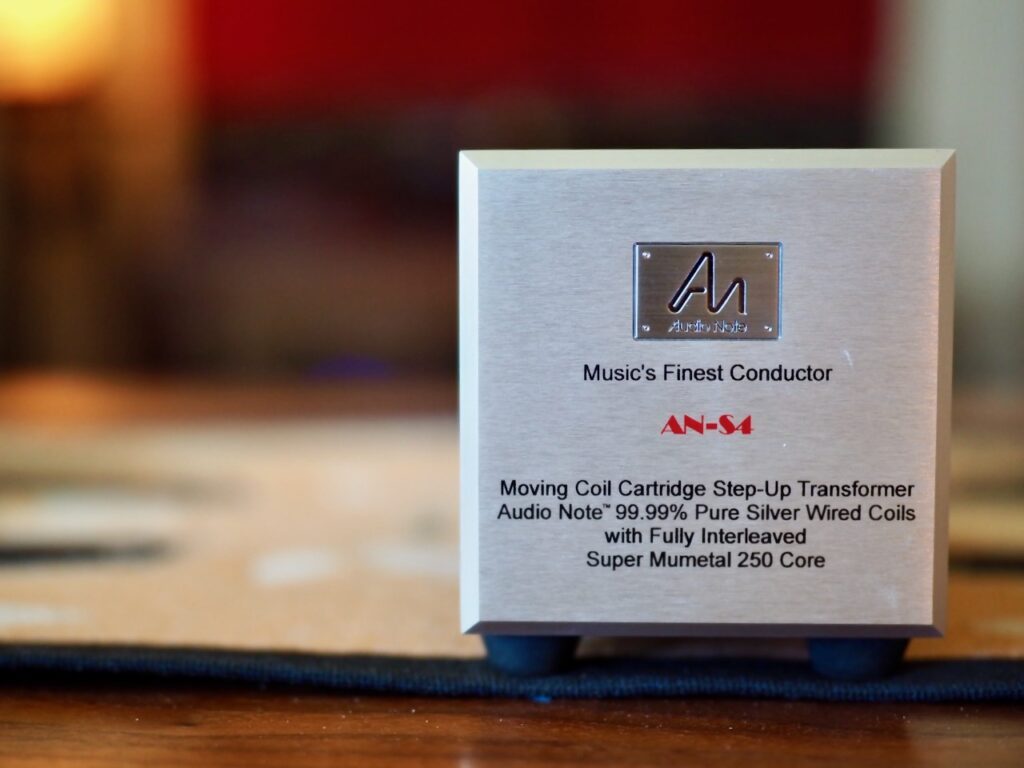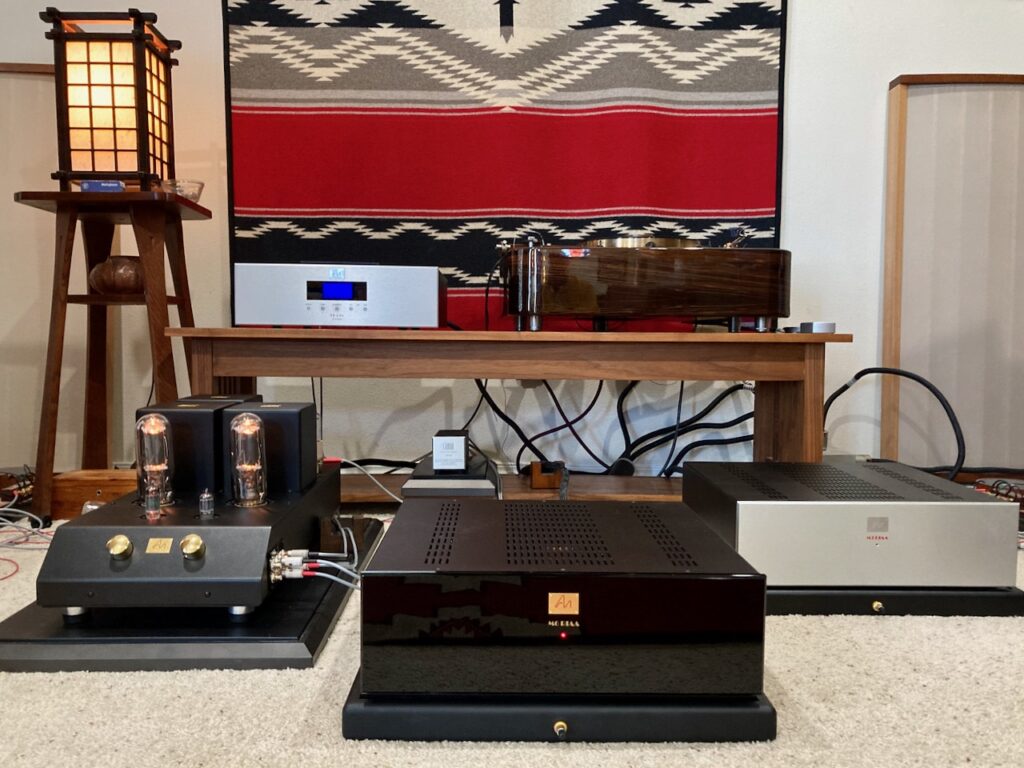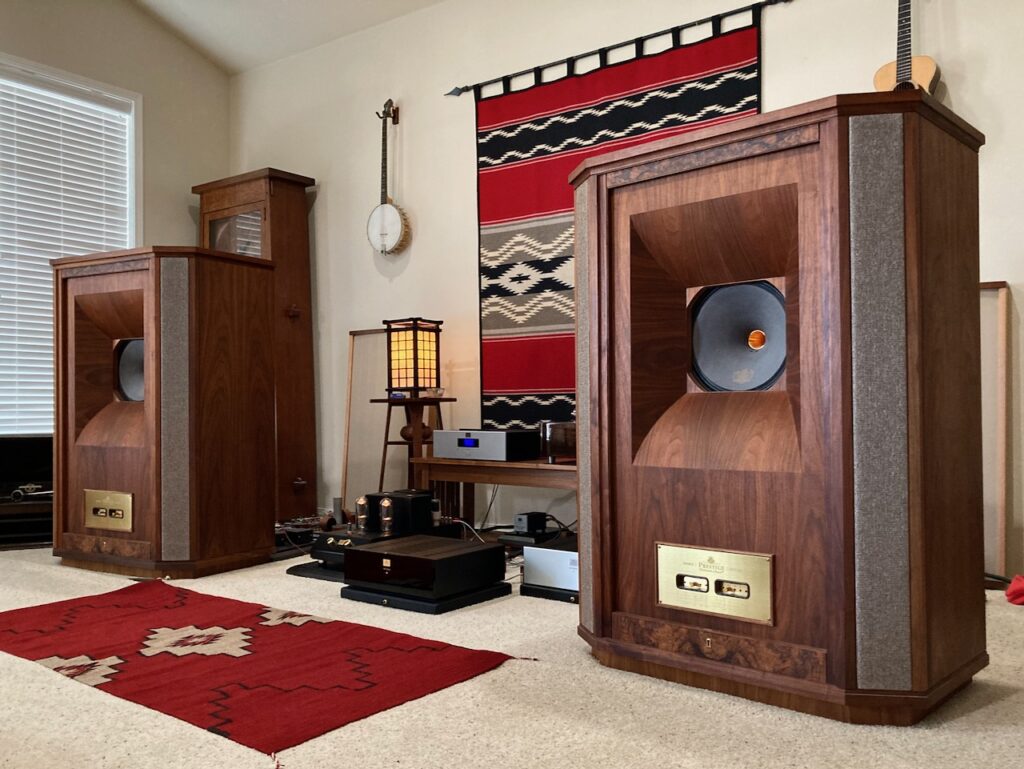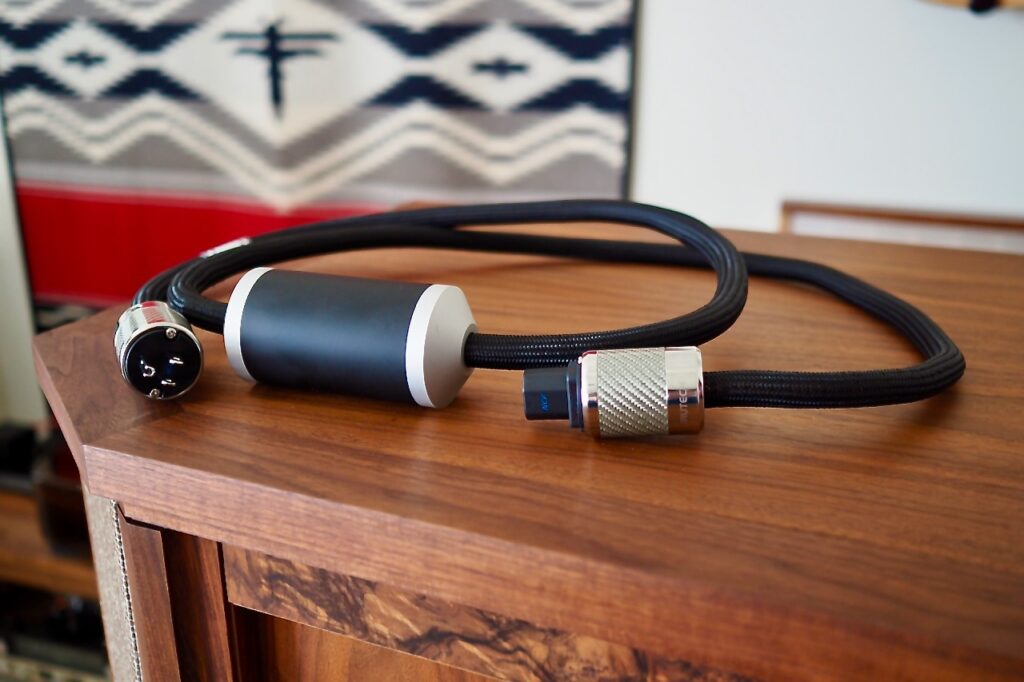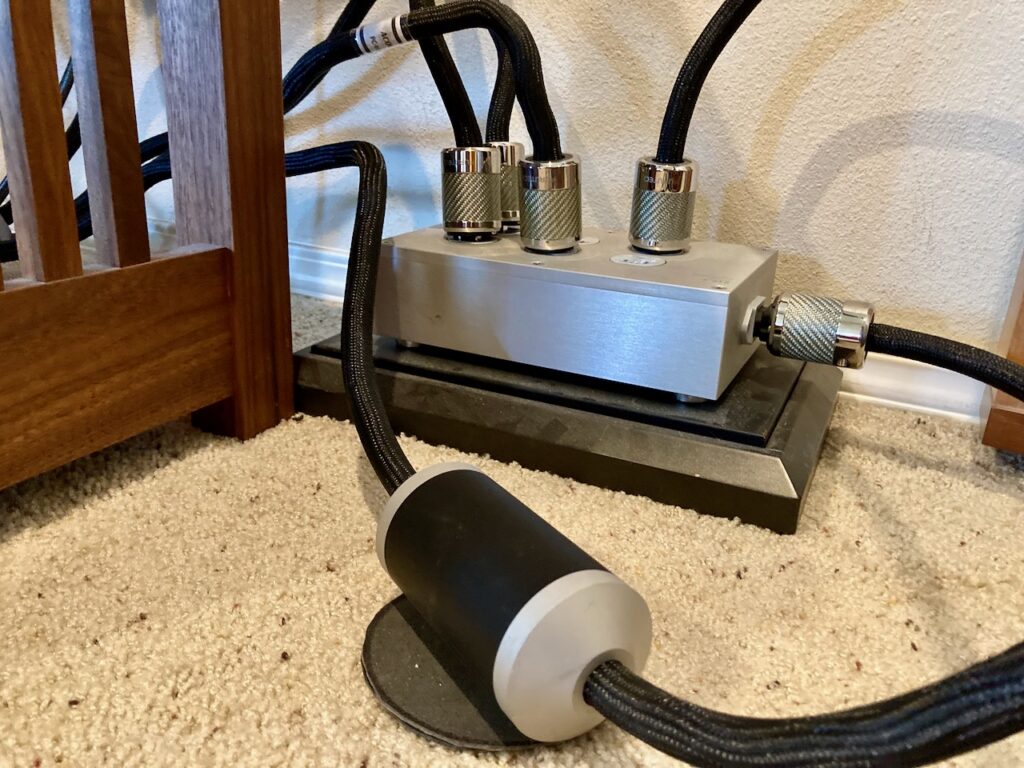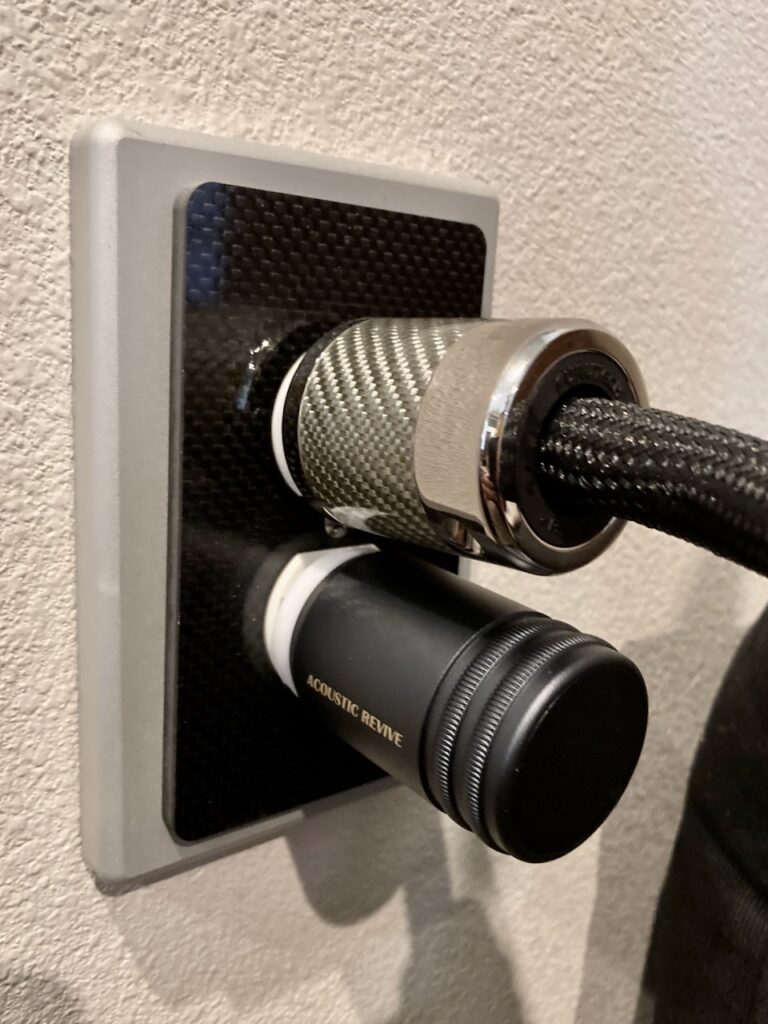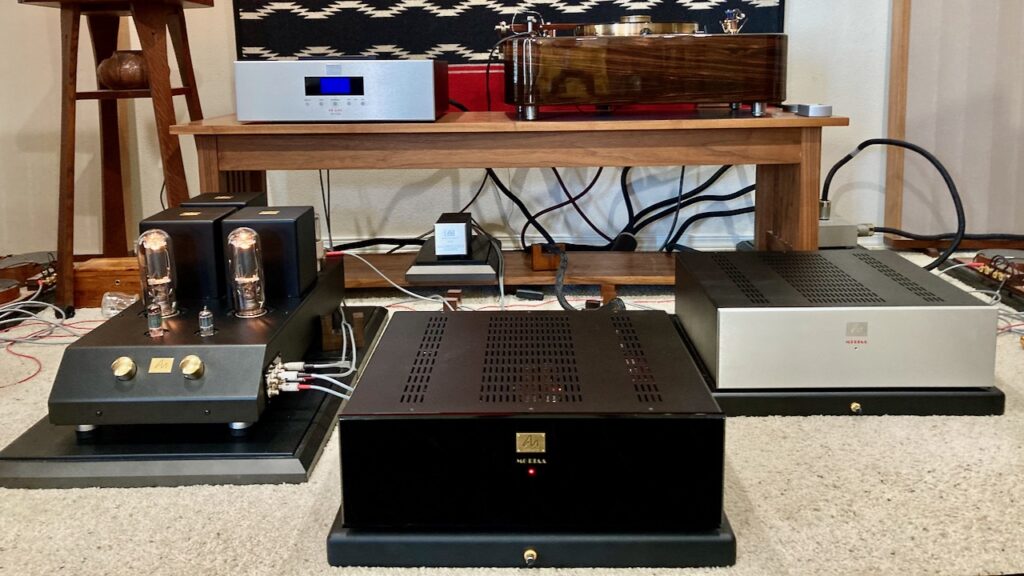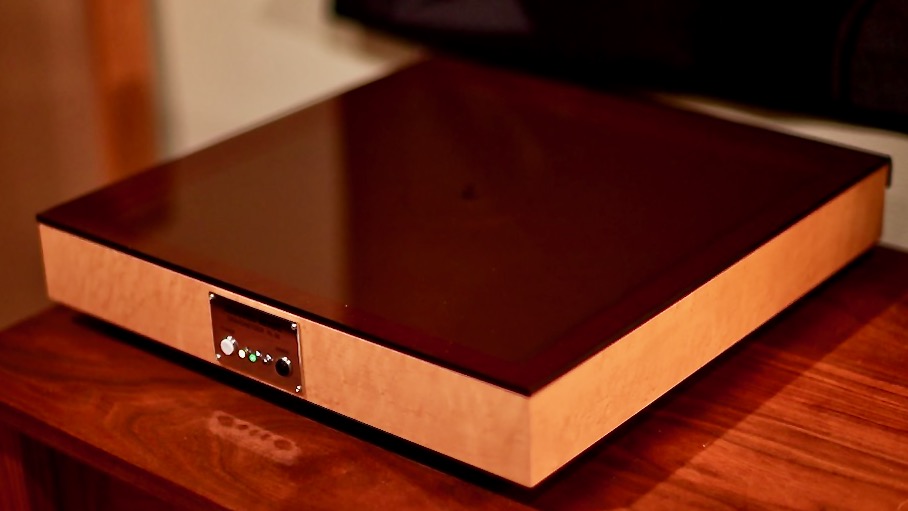As is my custom, I like to provide readers of Jeff's Place a preview of upcoming feature articles for Positive Feedback, which in this case is the Audio Note (UK) M6 RIAA phono preamplifier.
Update: The full feature article has now been published at Positive Feedback HERE.
Enjoy!
Greetings, friends, I hope you are doing well!
The M6 RIAA phono preamplifier is the latest in the Audio Note (UK) series of articles here at Positive Feedback, and like the title says, the M6 is "next level" in performance.
“Next level” is a phrase that gets tossed about casually to describe impressive performance that is above and beyond the norm, and while that certainly applies to the M6 RIAA, it also has a more specific meaning as described in the Audio Note (UK) “Performance Level System."
Audio Note (UK) builds components in ascending levels of performance from Level Zero to Level Six.
Firstly, the “level” implies the level of sonic performance within the Audio Note (UK) product lines, and secondly, the “level” is an aid to dealers and customers for matching components horizontally within the same performance level when building or upgrading an audio system.
For example, in this Audio Note (UK) series I first reviewed the Level Two Oto Phono SE Signature EL84 SEP integrated amplifier mentioned above (Issue 108), then the Level Three Meishu Phono Silver Tonmeister 300B SET integrated amplifier (Issue 122), and then the Level Four Tomei 211 SET integrated amplifier (Issue 133).
Each Level utilizes a circuit that is intended to give the best performance possible at a given price level in the integrated amplifier product line, and indeed that has been my experience with these Audio Note (UK) integrated amplifiers.
While I adored each of those integrated amplifiers, it was immediately obvious that each higher performance level in the Audio Note (UK) integrated amplifier product line delivered a dramatic increase in sonic performance.
With the Oto EL84 SEP and Meishu 300B SET integrated amplifiers, the phono preamplifier was conveniently located within their chassis. However, when going to the Level Four Tomei 211 SET, it is just too big and heavy of an integrated amplifier to place a phono stage inside its chassis.
I also imagine that given the Tomei’s price point, most buyers will want to pick out their own choice for a separate phono stage anyways.
Peter sent along an M3 RIAA phono preamplifier as a good match to the Tomei (above right). The M3 RIAA is a full-chassis phono preamplifier whose circuit forms the basis of the M3 (Level Three) through M8 (Level Five) phono preamplifier product line.
I thought the phono preamplifiers in the Oto and Meishu integrated amplifiers were splendid sounding, but the M3 RIAA was at a significantly higher level of sonic performance, and until the arrival of the M6 RIAA, the M3 RIAA was the finest performing phono stage I’d heard in my home to date.
Peter successfully demonstrated to me the increase in sonic performance between the different amplifier circuits used in the integrated amplifier product line - the Level Two EL84 SEP circuit of the Oto, the Level Three 300B SET circuit of the Meishu, and the Level Four 211 SET circuit of the Tomei - but now it was time to move on to our next circuitry adventure.
Now Peter wanted to demonstrate to me what was possible when upgrading the sonic performance of the same circuit to the next Level through upgraded circuit components, in this case the increase in performance when going from the Level Three M3 RIAA to the Level Four M6 RIAA.
Audio Note (UK) M3 RIAA and M6 RIAA Design Comparison
Let's go over the component differences between the Level Three M3 RIAA (right) and the Level Four M6 RIAA (middle).
First of all, what they have in common: As I mentioned, the M3 RIAA phono stage is the first step of M3 to M8 pre-amplifier family, all of which share the same circuit topology across the range: M3 (Level Three), M5, M6 (Level Four), and M8 Level Five), with parts quality upgraded level by level within the range.
The Audio Note (UK) M3 (top view above) through M8 RIAA phono preamplifier product line utilizes no negative feedback (NFB), and features the use of passive CR RIAA equalization.
Using no NFB is the purest high-performance way to build a phono preamplifier, and avoids the use of performance reducing NFB, as other valve phono stages do.
You can think of the no NFB approach to phono preamplifier design as the purity equivalent of a single-ended-triode amplifier compared to a push-pull amplifier, as more important signal information comes through than would be possible when using NFB in a circuit.
The overall specifications for the M6 RIAA phono preamplifier (top view above) are an input impedance of 47 kΩ, an input sensitivity of 126 mV for 1 V output, an output impedance of <10 Ohms, a weight of approximately 37.5 pounds, and dimensions of 5.5 inches high, by 17.3 inches wide, and 16 inches deep.
Ten vacuum tubes are used in the M6 & M3 RIAAs' circuits:
On the line stage side of the chassis the M6 uses a single NOS GE 7044 for V2, and the M3 uses a NOS JAN Phillips 5687WB.
M6 RIAA: NOS GE 7044 for V2 (above).
M3 RIAA: NOS JAN Phillips 5687WB for V2 (above)
On the power supplies side of the chassis (photos below):
The M6 uses 2 x NOS Phillips 6X5G in V3 and V9, and the M3 uses 2 x NOS 6U5C Russian tubes.
The M6 uses 2 x NOS RCA ECL82/6BM8 in V4 and V10, and the M3 uses 2x Yugoslavian Ei ECL82 in V4 and V10.
Both the M6 & M3 use 2 x NOS Raytheon JAN 5651WA in V5 and V11.
M6 power supplies uses 2 x NOS Phillips 6X5G in V3 and V9; 2 x NOS RCA ECL82/6BM8 in V4 and V10; 2 x Raytheon JAN 5651WA in V5 and V11 (photo above).
M3 power supplies uses 2 x NOS 6U5C Russian tubes in V3 and V9; 2x Ei ECL82 in V4 and V10; 2 x Raytheon JAN 5651WA in V5 and V11 (photo above).
Line stage side of chassis:
Both M6 and the M3 use 3 x GE JAN 5670W/2C51W in V6-8.
M6: 3 x GE JAN 5670W/2C51W in V6-8 (photo above).
M3: 3 x GE JAN 5670W/2C51W in V6-8 (photo above).
Both the M3 & M6 RIAA feature pure Class A operation, zero negative feedback, single-ended circuit topology, valve rectification, and where the M6 attains its Level Four designation over the M3's Level Three designation, is in the materials and component quality of the circuit topology.
Level Three & Four Differences
As noted above, the M6 RIAA features a 7044 in the line stage, whereas the M3 RIAA features a 5687WB in the line stage.
M6 RIAA features a 7044 in the line stage (above).
M6 RIAA line stage side view (above).
M3 RIAA features a 5687WB in the line stage (above).
M3 RIAA line stage side view (above).
The M6 utilizes Audio Note (UK) silver wiring (M3 has copper wiring) and tantalum resistors. Audio Note (UK) custom electrolytic capacitors and Audio Note (UK) copper foil signal capacitors are used throughout the M6's circuit.
M6 has custom Audio Note (UK) output transformers with a UHiB c-core, copper primary and silver secondary windings (above).
M3 has Audio Note (UK) output transformers with I-E M4 cores and copper windings (above).
In the M6, in-house designed and manufactured, custom Audio Note (UK) output transformers, which feature a UHiB C-core, copper primary and silver secondary windings are featured (whereas the M3 has Audio Note (UK) output transformers with I-E M4 cores and copper windings).
More photos of the power supplies side of the chassis:
Top view of the M6 power supplies side of chassis (above).
Side view of the M6 power supplies side of chassis (above).
M3 top view of power supply side of chassis (above).
M3 side view of power supply side of chassis (above).
For additional information, you can read through the owner's manuals for the M3 RIAA (HERE) and the M6 RIAA (HERE).
I hope you enjoyed the "walkthrough" of the insides of the Audio Note (UK) M6 RIAA and M3 RIAA phono stages, and that it gave you a better feel for the component upgrades that take the Level Three M3 RIAA circuit to the M6 RIAA’s Level Four status.
Topless M6 RIAA (left above) and M3 RIAA (right above).
Here’s a final summary of the differences between the M3 RIAA & M6 RIAA circuitry components:
M3 RIAA:
Vacuum tubes - V2 (NOS JAN Phillips 5687WB); V3 & V9 (2 x NOS 6U5C Russian tubes); V4 & V10 (2x Yugoslavian Ei ECL82).
Phono stage output capacitors - copper foil.
Phono stage circuit wiring - copper wire.
Main power supply electrolytics - Cerafine & standard electrolytics.
Power supply junction electrolytics - Cerafine & standard Black Gates.
Signal capacitors - copper foil.
Output transformer - Copper wired, M4 IE-core.
M6 RIAA:
Vacuum tubes - V2 (NOS GE 7044); V3 & V9 (2 x NOS Phillips 6X5G); V4 & V10 (2 x NOS RCA ECL82/6BM8);
Phono stage output capacitors - silver foil.
Phono stage circuit wiring - silver wire.
Main power supply electrolytics - Cerafine.
Power supply junction electrolytics - FK & standard Black Gates.
Signal capacitors - copper foil in phono stage, silver foil interstage signal caps on output of phono second stage.
Output transformer - Copper wired primary, silver secondary, high nickel content C-core.
Audio System For This Article
Peter has demonstrated to me how the synergy effect works with his Audio Note (UK) components, and while I have found all of the Audio Note (UK) components to be stellar performers in their own right, I have to say it's a very significant benefit to be able to have all the components singing together with complimentary voicing.
It was also a real treat to be able to install all the Audio Note (UK) components into my audio system and have them work perfectly together. Plug and play with no fuss or extra effort involved—what a welcome treat.
For the analog source, my CTC Garrard 301 turntable (below) has an Audio Note (UK) IO I moving-coil phono cartridge mounted to a Schick graphite headshell, with Acoustic Revive PC-TripleC/EX silver headshell leads, mounted to a Schick tonearm.
The tonearm leads connect to a Level Four Audio Note (UK) silver AN-S4 SUT, which then connects to either the Audio Note (UK) Level Three M3 or Level Four M6 RIAA phono preamplifier.
The M3/M6 RIAA phono preamplifiers connected to the Level Four Tomei 211 SET integrated amplifier with Audio Note (UK) AN-V silver interconnects.
The Level Four Tomei 211 SET integrated amplifier connects to my Tannoy Westminster Royal SE loudspeakers with a single-wire pair of Audio Note (UK) AN-SPe silver loudspeaker cables.
My Tannoy Westminster Royal SE loudspeakers have been rewired internally with vintage Western Electric WE16GA tinned-copper wire, and utilize external Duelund Coherent Audio crossovers featuring CAST silver components in the high-frequency portion of the crossovers, and CAST copper components in the low-frequency portion of the crossovers.
All the power cables are the Acoustic Revive Absolute (sources) or Power Reference TripleC NCF (everything else).
The power cables all connect to an Acoustic Revive RPT-6 Absolute NCF Power Distributor, which in turn connects to an AC wall outlet with an Acoustic Revive Absolute power cord.
My AC wall outlets are composed of Acoustic Revive CB-1DB receptacle base plates, CFRP-1F carbon fiber outlet plates, and Acoustic Revive modified Oyaide R-1 receptacles.
Due to its large size, the Tomei 211 amp rests upon a pair of Acoustic Revive RST-38 vibration isolation platforms (left above), and the AN-S4 SUT sits upon an Acoustic Revive TB-38 vibration isolation platform (back middle above).
The M3 (right above) and M6 (middle above) RIAA phono preamplifiers rested upon Acoustic Revive RAF-48 air isolation platforms.
Cables are suspended with Acoustic Revive RCI-3HK cable lifts.
Prior to playing albums, I cleaned each record on my VPI HW-19 recording cleaning machine, and then conditioned it with the Acoustic Revive RL-30 Mark III demagnetizer.
Listening Impressions
Ok, that's all for now. I'll update this post with a link to the full article at Positive Feedback when it is available to read in a couple of weeks.
As always, thanks for stopping by, and may the tone be with you!




